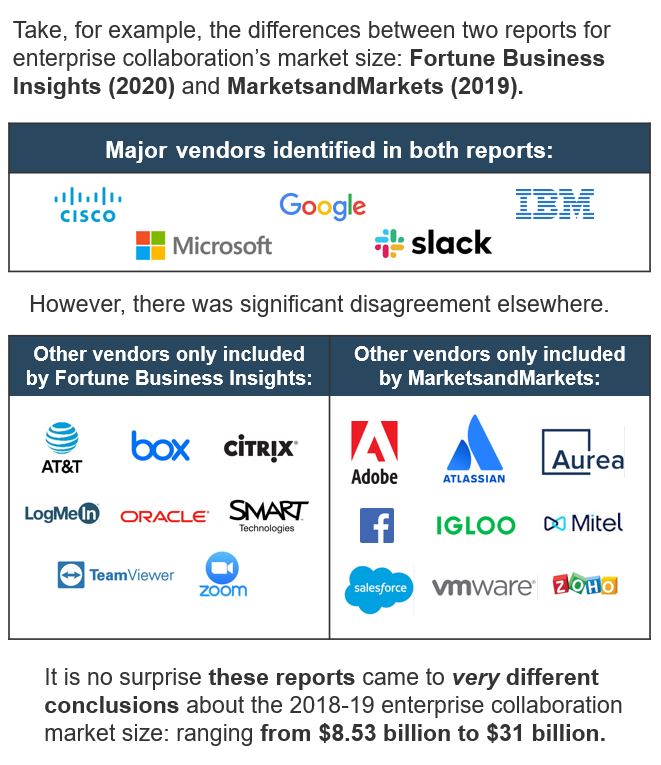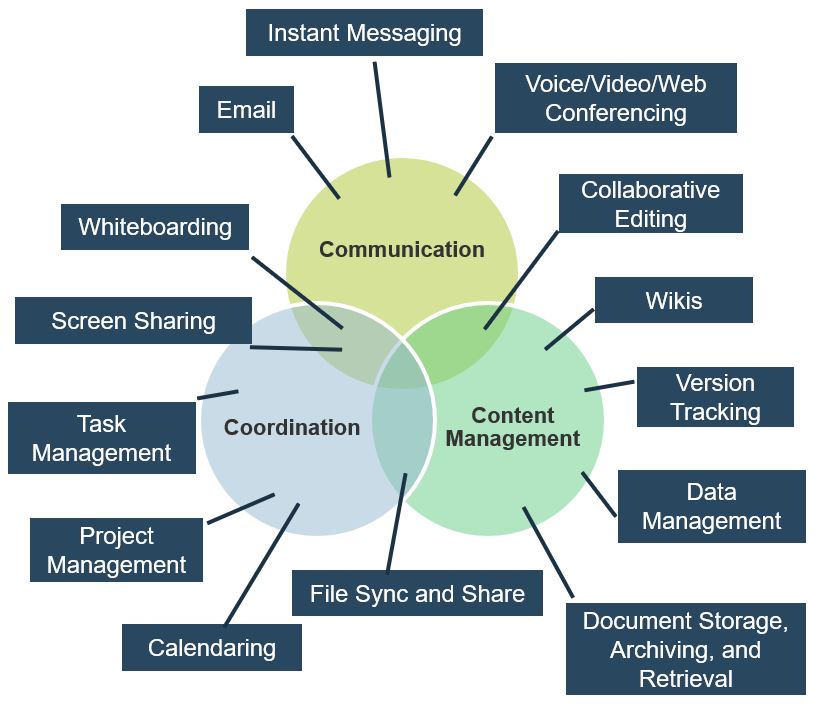The Three C’s of Enterprise Collaboration Software
Remote work magnified the complexity of the enterprise collaboration software marketspace. There was already a “collaboration invasion” of tools to choose from before COVID-19 hit, with a 2018 RingCentral report showing that 66% of employees want a collaboration strategy to achieve better workflow. Without such a strategy, 69% of employees spend up to an hour a day switching between applications, with 56% finding the search for information in different applications disruptive. These issues were only exacerbated when collaboration tools became the essential hub for remote work.
Organizations without a collaboration strategy for remote work suffered several problems: dealing with security risks caused by unsupported shadow IT, paying for multiple tools that performed the same capabilities, and trying to standardize competing end-user needs. Indeed, this latter point emphasizes the general difficulty with exploring the enterprise collaboration market: there are many ways to collaborate with just as many tools to match. You need to know what kind of collaboration your users will be engaging in to avoid purchasing the wrong tool. As such, navigating this multifaceted marketspace without a framework to categorize collaboration types debilitates effective software selection.
Moreover, it is not just organizations that struggle to understand this market. Even research firms that specialize in this space still reach vastly different conclusions about how large the collaboration market is and what typical compound annual growth rate (CAGR) can be expected. Some reports will be too narrow and leave out content management vendors, while others might be too broad and include vendors servicing telephony systems. As figure 1 shows below, a method to clarify this marketspace is wanting.

Figure 1. Enterprise Collaboration Market Size.
Source: Info-Tech’s 2020 Enterprise Collaboration Tools: Market Trends and Buyer’s Guide.
Info-Tech’s Three C’s of Enterprise Collaboration framework aims to provide the clarity organizations need to broach this marketspace. This framework understands “collaboration” as an umbrella term that has three major subcategories, known as the Three C’s:
- Communication
- Coordination
- Content Management
As figure 2 shows below, these Three C’s then categorize the broad range of collaboration capabilities that one can find on the market. Collaboration tools primarily specialize in one of these categories, with occasional overlap:

Figure 2. Identifying Type of Collaboration.
Source: Info-Tech’s 2020 Enterprise Collaboration Tools: Market Trends and Buyer’s Guide.
It is tempting to think of meetings software as the archetypal collaboration tool. However, as figure 2 shows, the capabilities within meetings software largely fall into the communication category. If a collaboration tool helps people accomplish a task together, we also need to think about file sharing and storage as well as general project management.
Some examples of tools we can find in each of the Three C’s include:
|
Communication |
Coordination |
Content Management |
|
|
|
Importantly, there is no one tool to rule them all; if that were the case, your choice would be easy. Instead, what we find are either point solutions that specialize in one of the Three C’s or a general solution that can meet basic needs across categories. As such, it is important to know the specific collaboration types that you want a tool to address, and how robust those capabilities ought to be, to scope the software selection process. Indeed, perhaps just the basics will do; after all, a jack-of-all-trades is a master of none, but it is sometimes more useful than a master of one.